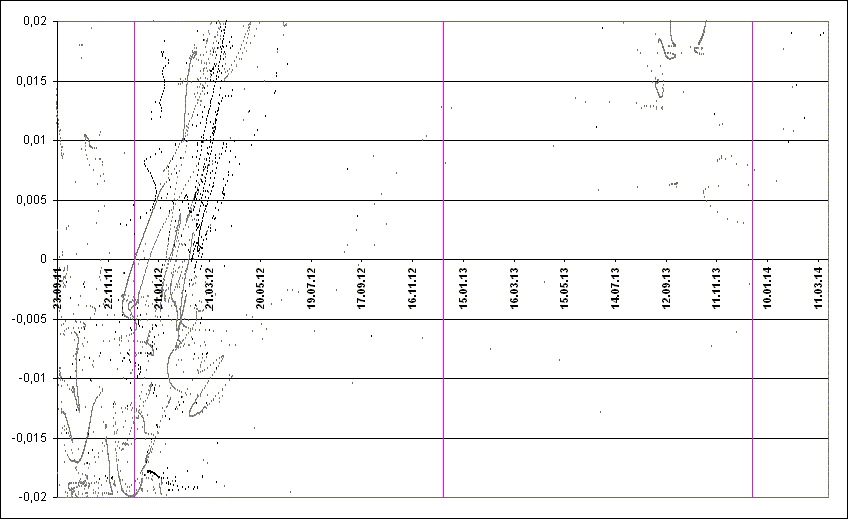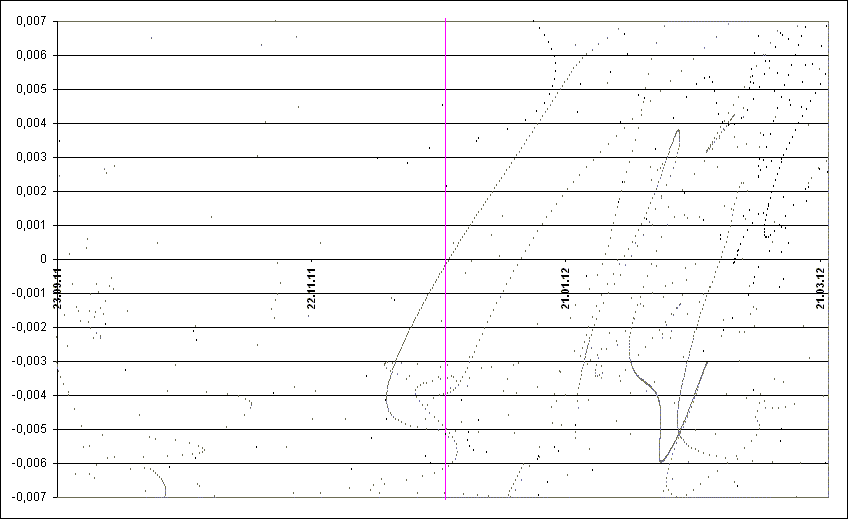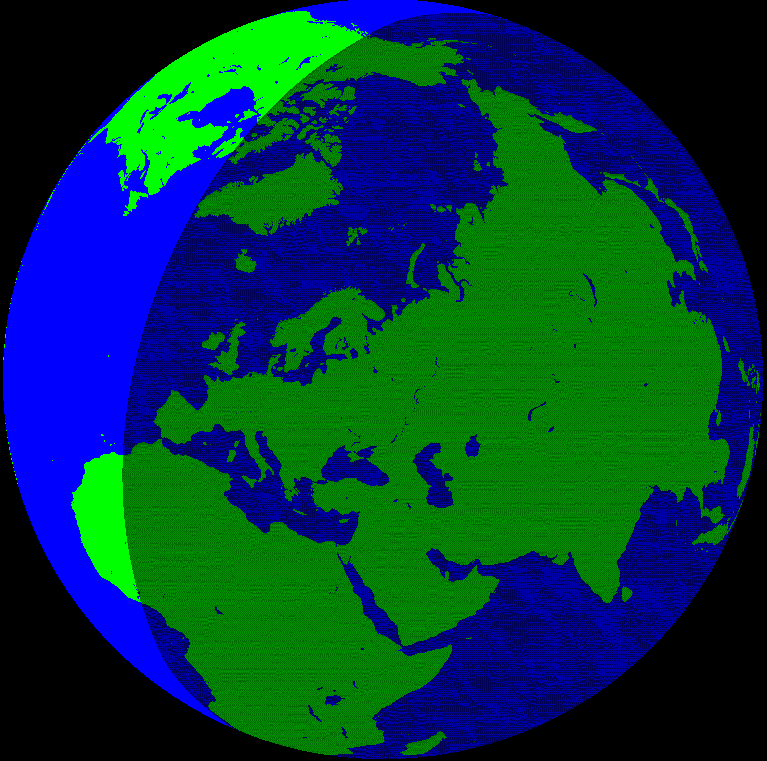Ursids 2011: prediction of activity
to the list of predictions

Fig. 1. Space-temporal projection of 6P-ids trails parts onto their minimal distance passages dirung the period (correspondence between colours of the particles and their ejection velocities can be seen here).

Fig. 2. Detailed space-temporal projection of Ursids trails parts onto their minimal distance passages in 2011 (correspondence between colours of the particles and their ejection velocities can be seen here).
In 2011 the Earth passes close to the 1117 trail. The encounter parameters are the following: minimum distance 0.00041 AU, ejection velocity -13.11 m/s, trail density - 44.7% of a 1 rev Leonid trail dencity, date and time of maximim - December 22, 17:48 UT.
Despite high age of the considered trail, its encountering part remains regular and quite dense. THe negative ejection velocity substantially decreases the predicted outburst intensity for this encounter. Still, it is expected that around the given time the Ursids will give an enhancement with ZHR=10-15 above background activity. Theoretical radiant: RA=219.3°, Dec=+75.8°, Vg=33.31 km/h.

Fig. 3. The Earth as seen from coming Ursid meteors (RA=219.3°, Dec=+75.8°) during the expected maximum time of outburst from 1117 trail at 17:48 UT 22 December.
This outburst, if happens in expected time, will be visible from almost all territory of Eurasia, as well as from noth-eastern half of Africa.
References
1. "Comet's dust 2.0" program by S. Shanov and S. Dubrovsky. [Used for orbital computations.]
2. Lyytinen E, van Flandern T. "Predicting the strength of Leonid outbursts", 2000, Icarus, P. 158-160.
3. Jenniskens P. Meteor showers and their parent comets, 2006, 780 p. 4. Kasuo Kinoshita, http://jcometobs.web.fc2.com/ [Orbital elements of the comet 8P Tuttle]
References
1. "Comet's dust 2.0" program by S. Shanov and S. Dubrovsky. [Used for orbital computations.]
2. Lyytinen E, van Flandern T. "Predicting the strength of Leonid outbursts", 2000, Icarus, P. 158-160.
3. Jenniskens P. Meteor showers and their parent comets, 2006, 780 p. 4. Kasuo Kinoshita, http://jcometobs.web.fc2.com/ [Orbital elements of the comet 8P Tuttle]